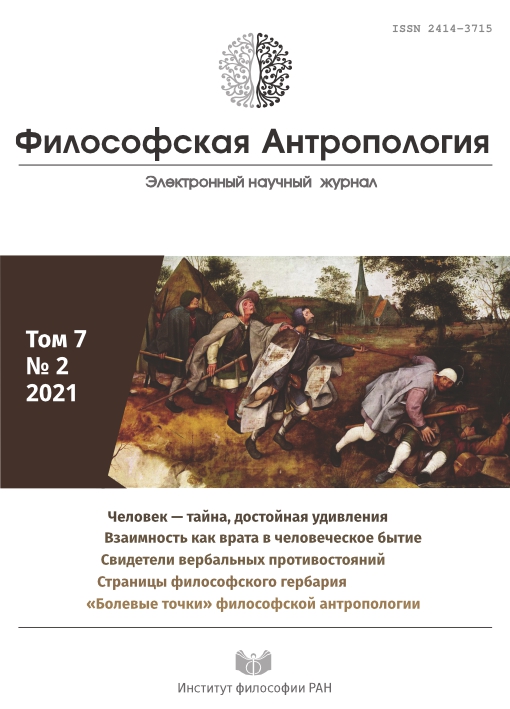The Philosophical Anthropology of Martin Buber
DOI:
https://doi.org/10.21146/2414-3715-2021-7-2-6-33Keywords:
Buber Martin, religious existentialism, I and Thou, another, dialogical principle, the era of comfort, the era of homelessness, existential well-being, loneliness, individualistic anthropologyAbstract
Martin (Mordechai) Buber was born in Vienna in 1878. He lived in Germany until 1933, then emigrated to Switzerland, and later to Palestine. After the Second World War, the philosopher condemned Arab-Jewish hostility and inhumane actions towards Palestinian Arabs. Buber died in 1965 in Jerusalem. The creative legacy of the philosopher is extremely popular in many countries. As a thinker, Buber combined many diverse interests and aspirations. He was a non-trivial sage-philosopher, a brilliant translator of the Tanakh, a researcher of Hasidism, an outstanding educator and preacher, poet and writer. Buber's views are close to dialectical theology and existentialism.
The central idea of Buber's philosophy is being as a dialogue between God and man, man and the world. Developing the concept of religious existentialism, the thinker significantly enriched philosophical anthropology. The insight expressed by him, rooted in the biblical tradition, is simple and majestic: a person's life is in dialogue with other people who are like him. This dialogue is creative and saving when it is carried out through the medium of God, his precepts about morality and love. It is in this dialogue that the vitality of God himself is revealed. Thus, Buber responded with all his creativity to the philosophical ideas of the XX century, to the ideas of "the death of God" and "the death of Man".

